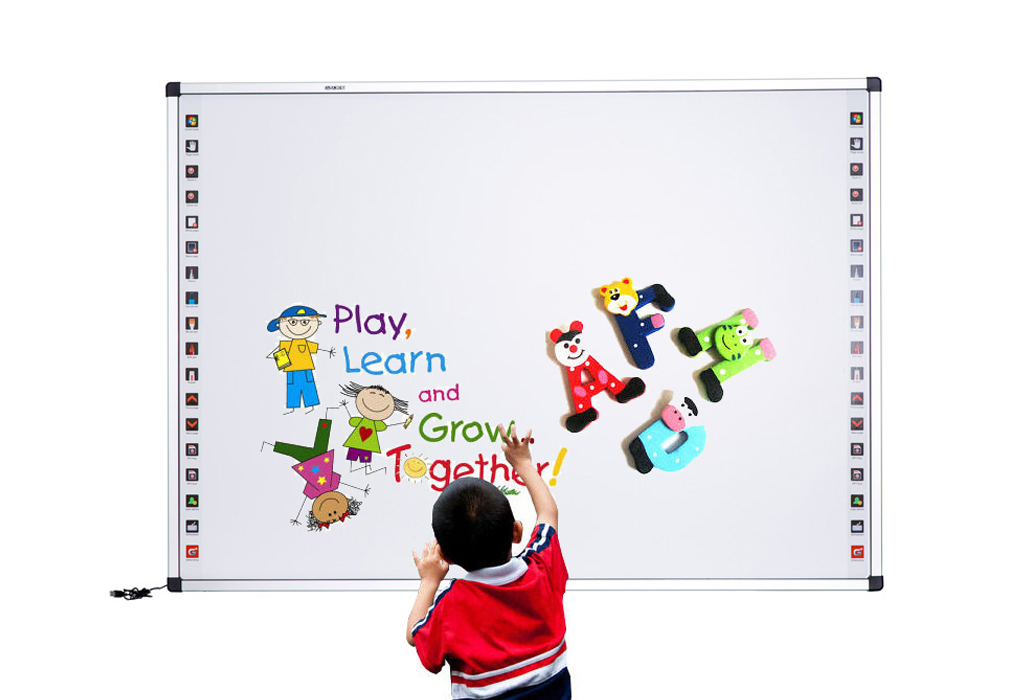5 Ideas of Interactive Whiteboard Presentation
The interactive whiteboard has several points in common with the digital whiteboard, since it needs a projector that transfers the content from our computer, but here comes the good thing: this type of whiteboard is tactile! We can interact with the content directly on the surface of the board itself.
1. Storytelling: The teacher does not have to be the only star. The glory of the presentation can go to all the participants who have a story to tell. The main concepts can be discussed and students should have time to develop a personal example. This exercise helps students relate to the subject. Also, listening to other students' examples will further clarify concepts. There is less need for the teacher to plan lengthy examples and be the only one to speak during the presentation. Through shared stories, teachers can also assess how well students understand.
- Storytelling with technology: Many interactive whiteboards have cast and embed features that allow students to work with their own examples on their devices and share them by sending them to the whiteboard. This allows students to quickly upload and share their story without emailing files or using cables or USBs.
2. Non-linear presentation: Presentations that don't follow a strict order, but instead flow organically from topic to topic based on feedback from the audience, are a great way to engage participants. Once prepared, the presenter can move from topic to topic by asking questions, polling, or receiving prompts at the end of each key point. This allows the audience to “create” their own presentation about what they want to hear, and not in a rigid way like traditional slide-based presentations.
- Non-linear presentation with technology: There are non-linear presentation apps, like Prezi, that help presenters create presentations in easy-to-customize templates. They offer a zoomable work surface to help people share knowledge, stories and inspire the audience to act. The work surface shows the relationships between points and provides a recommended flow, but not a fixed path to follow.
3. Polls, surveys and questionnaires: One of the most recognized and used tools in the classroom to get a quick reaction from students are polls, surveys and questionnaires. In the case of polls, simple questions with limited answers are used to achieve consensus. This could be done by a show of hands, by voting, or by forming groups of students. Surveys would require printed paper with multiple choices, scales, or short answers to collect opinions. Quizzes are used to quickly assess students' knowledge of what has just been covered, so the class can identify areas of difficulty and crystallize main concepts.
- Polls, surveys and questionnaires with technology: Many classroom management software, like Google Classroom, have built-in tools for creating polls, surveys, and quizzes, along with homework, communication, and other educational features. Once submitted, collection and scoring are instant. Results can be easily shared with the student both individually and as a group.
4. Games: What student of any age doesn't love a good game, quiz or competition? Incorporating a small game into a presentation breaks up the normal class format and gets the audience to think critically to help their team win. There are many versions and adaptations of basic educational games. Teachers can take games like Pictionary, Jeopardy, Casino and Bingo and adapt them to their needs.
- Gamify the interactive presentation: By embedding links to apps like ClassCraft or Kahoot into the presentation, the teacher can quickly launch an interactive digital game. These apps help teachers tailor their own games by incorporating their questions, data, and materials for individual, small team, or whole class participation.
5. Discussions and group sessions. Making the class just listen to the lesson is the downfall of any interactive presentation. Adding sections where students can have open discussion or group sessions can help them learn from each other, share information, and have the opportunity to ask questions of their peers. It is also an opportunity for the teacher to take a break from the talk and help small groups or individual students while the rest of the class continues to chat.
- Bring the discussion online for interactive presentations. Live discussion apps like NowComment allow students to mark up and discuss text in real time, which is great for triggering peer review and quickly bringing student input together in one place. On the other hand, YoTech is ideal for teachers to create and moderate chat rooms in real time. Students can send text messages, reply to other messages, and share pictures and drawings. Online chat groups are a great way for large groups of students to collaborate and interact in one place, while keeping noise levels low in the classroom.





